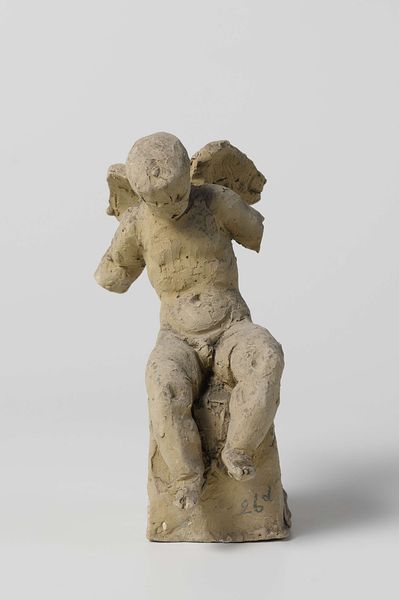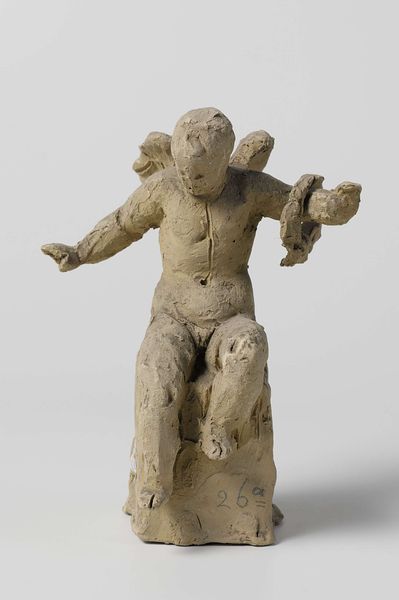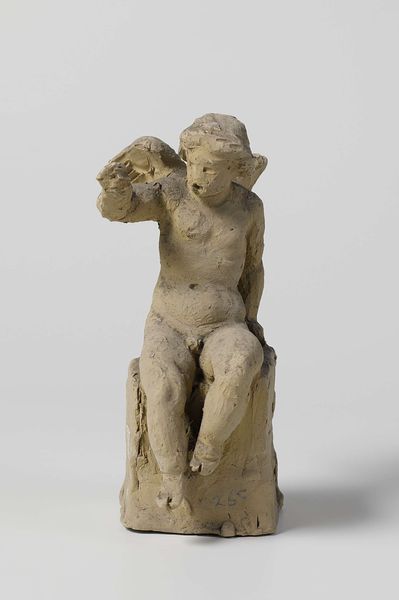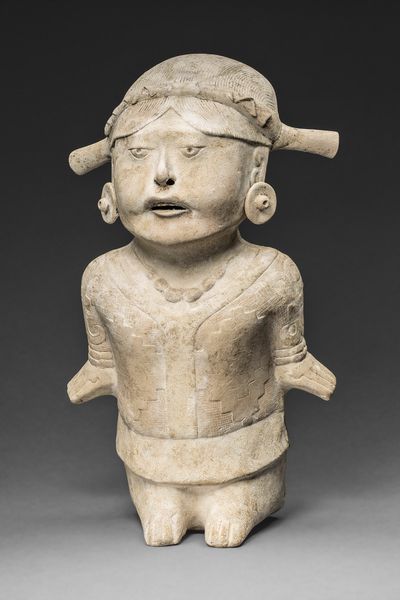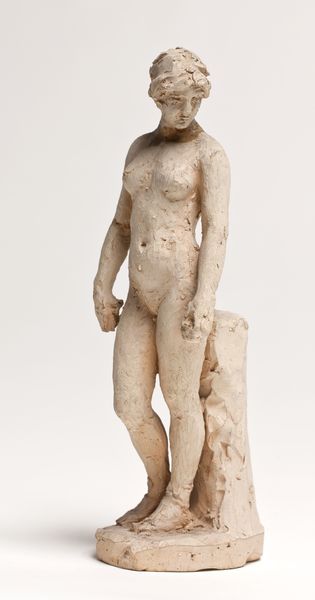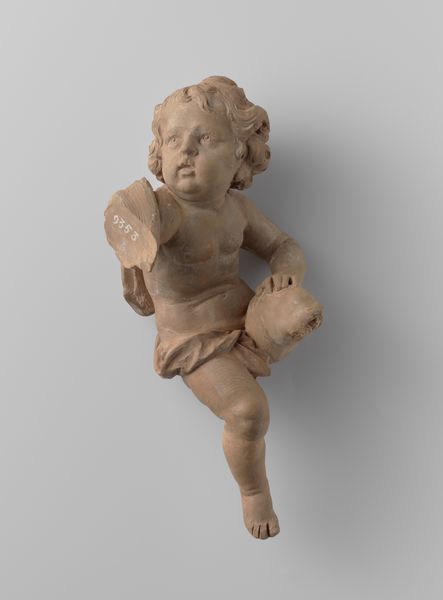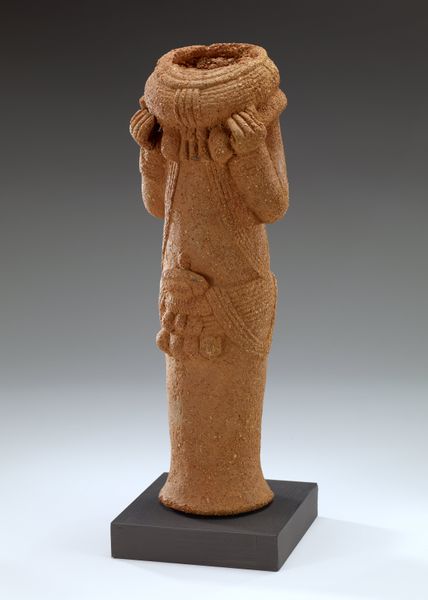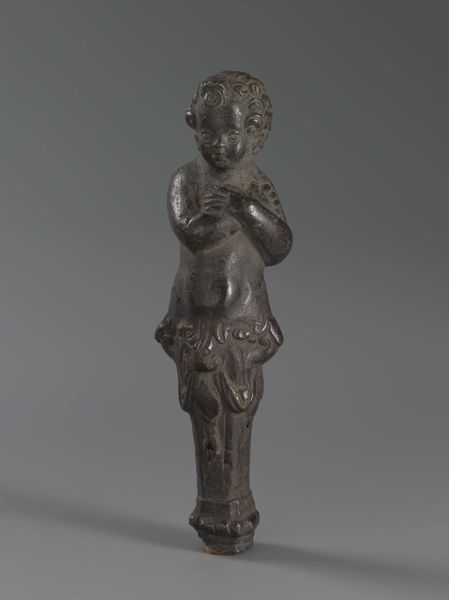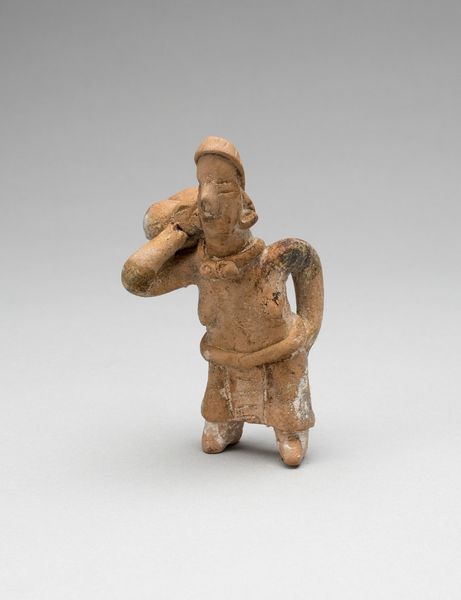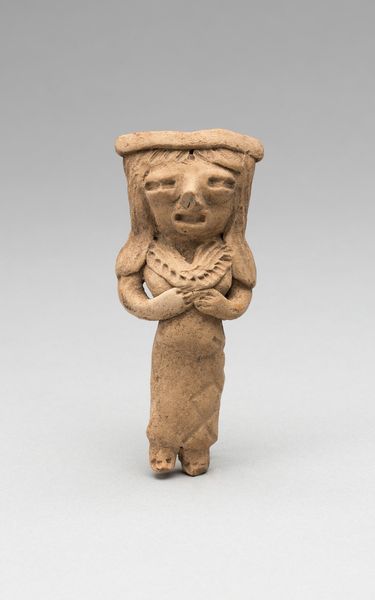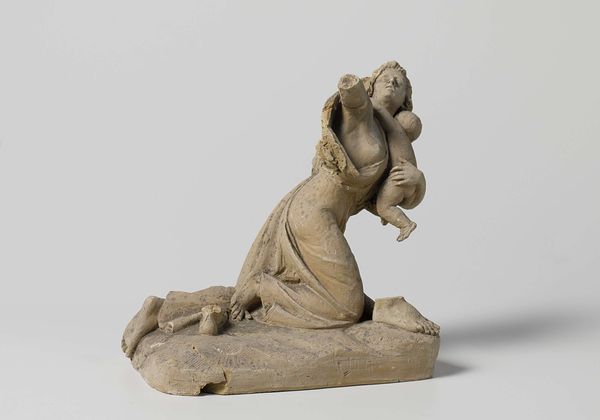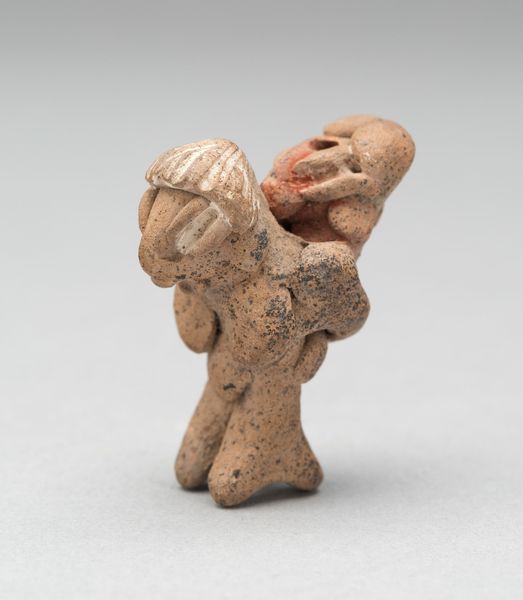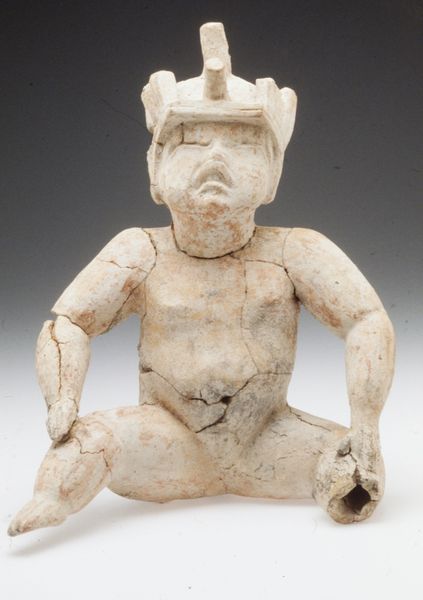
carving, sculpture, wood
#
portrait
#
carving
#
neoclassicism
#
figuration
#
sculpture
#
romanticism
#
wood
#
academic-art
Dimensions: height 18 cm, width 8.2 cm, depth 12.4 cm
Copyright: Rijks Museum: Open Domain
Curator: This wooden carving, titled "Gevleugelde Putto, fluitsplend," dates to around 1800-1900, and it's attributed to Eugène Lacomblé. Editor: Well, my first impression is one of quietude. There's a somberness to the putto’s downcast gaze and clasped hands, an almost melancholic mood that belies the traditionally joyful imagery associated with such figures. Curator: Yes, it’s a compelling juxtaposition. I’m particularly drawn to the rough texture of the wood. You can see the marks of the tools, the labor inherent in the creation. The artist has clearly chosen not to polish it to a high sheen, retaining the raw quality of the material. It almost seems like a commentary on the contrast between divine inspiration and the manual work required to manifest it. Editor: Precisely. It reminds us that even ethereal beings like putti have a grounded presence through their symbolic representation. Note how the putto is holding what looks like an exploded flute. Music, and specifically the flute, is typically associated with joyous abandon and revelry, even hedonism in some instances. Here the unformed, even ruined flute may instead symbolize a kind of innocence interrupted, or perhaps joy deferred. Curator: Interesting interpretation! I would argue the choice of wood aligns with Romantic notions of nature and authenticity, diverging from the idealized forms prevalent in Neoclassicism. The carving's imperfections invite contemplation on its creation process. Consider also that this was carved sometime around the turn of the nineteenth century and may reveal certain socioeconomic conditions concerning the ready availability of certain raw materials, skilled labor, and, of course, shifting artistic tastes. Editor: An intriguing material analysis, but I would add that even in Romanticism, there is still a clear connection to symbolism and archetypes of the past, if even in an antagonistic or oppositional mode. Regardless of period style, I see echoes of enduring imagery in this carving. Curator: Perhaps. Well, it’s clear we can both find merit and meaning within this putto’s story, irrespective of our critical approach. Editor: Indeed. It seems this modest sculpture has given us plenty to contemplate.
Comments
No comments
Be the first to comment and join the conversation on the ultimate creative platform.
